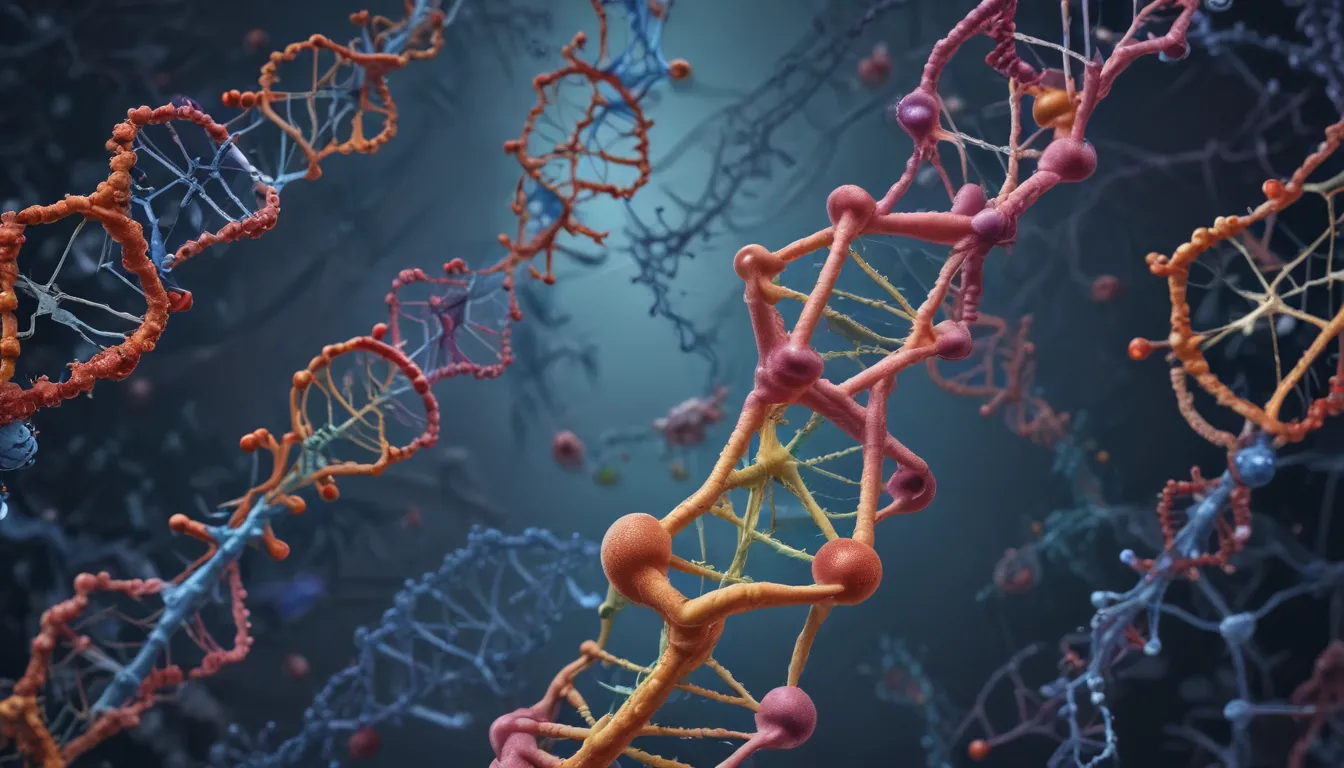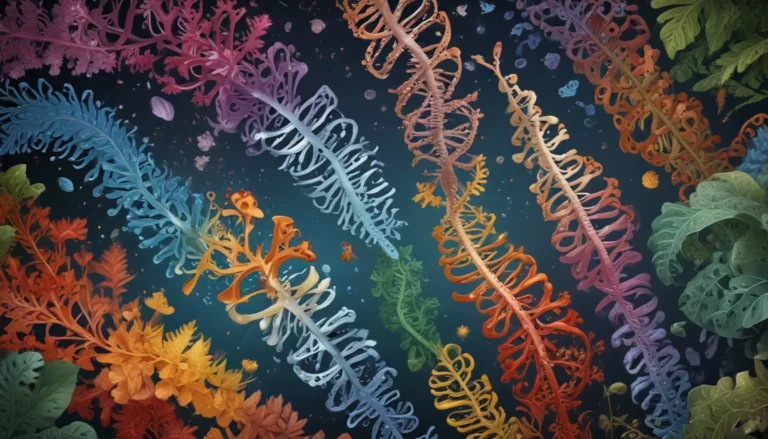A Note About Images: The images used in our articles are for illustration purposes only and may not exactly match the content. They are meant to engage readers, but the text should be relied upon for accurate information.
Gene regulatory networks hold the key to unraveling the mysteries of how genes interact and control various biological processes. These complex systems play a vital role in orchestrating the expression of genes, shaping the development and functioning of organisms. In this article, we will embark on a fascinating journey into the realm of gene regulatory networks, exploring 20 intriguing facts that highlight their importance and intricate nature. From understanding how these networks guide embryonic growth to deciphering gene expression patterns, gene regulatory networks have captivated scientists for decades. Let’s delve into these fascinating facts and discover the wonders of molecular biology and the intricate dance of genes that shape life as we know it.
Unlocking the Secrets of Gene Regulatory Networks
-
Gene regulatory networks control gene expression: Gene regulatory networks are intricate systems of genes, proteins, and molecules that work together to regulate gene expression, determining when and where specific genes are turned on or off.
-
Essential for development and growth: These networks play a crucial role during embryonic development, orchestrating the precise timing and coordination of cellular processes to form tissues and organs. They continue to function throughout an organism’s life, contributing to growth and maintaining cellular functions.
-
Dynamic and adaptable systems: Gene regulatory networks exhibit intricate dynamics and can respond to various stimuli, adapting and rewiring themselves to regulate gene expression in response to environmental changes or developmental cues.
The Intricacies of Gene Regulatory Networks
-
Represented as mathematical models: Scientists often construct mathematical models to simulate and study the behavior of gene regulatory networks. These models help understand complex interactions and predict how changes in gene expression can impact cellular processes.
-
Interact with other pathways: Gene regulatory networks do not operate in isolation but interact with other cellular pathways and signaling networks. These interactions enable them to integrate information from various sources and coordinate gene expression with other biological processes.
-
Role in disease development: Dysregulation of gene regulatory networks can contribute to the development and progression of various diseases, emphasizing the importance of understanding and regulating these networks for therapeutic interventions.
Exploring the Complexity of Gene Regulatory Networks
-
Hierarchical organization: Gene regulatory networks often follow a hierarchical structure where master regulatory genes control the expression of downstream genes, allowing precise control and coordination of gene expression patterns.
-
Cellular reprogramming: Gene regulatory networks play a crucial role in cellular reprogramming, converting one cell type into another. They drive and maintain the new cell identity during this process.
-
Feedback loops and non-linear dynamics: Feedback loops within gene regulatory networks create self-regulatory circuits, fine-tuning gene expression. The non-linear dynamics of these networks add complexity, where small changes in input signals can lead to significant changes in gene expression patterns.
Harnessing the Potential of Gene Regulatory Networks
-
Epigenetic modifications: Epigenetic modifications can influence gene regulatory networks’ activity, affecting gene regulation and responding to environmental factors.
-
Cell-type specificity: Gene regulatory networks can regulate the same set of genes differently in various cell types, contributing to cell diversity and unique functions.
-
Experimental reprogramming: Scientists can manipulate gene regulatory networks through genetic engineering and reprogramming techniques, paving the way for potential therapeutic approaches for diseases.
Embracing the Future of Gene Regulatory Networks
-
Subject of intense research: Understanding gene regulatory networks is an active area of research, employing experimental and computational approaches to unravel their intricacies.
-
Medical advancements: Advancements in understanding gene regulatory networks hold the potential to revolutionize medicine, leading to personalized therapies and treatments for different diseases.
Conclusion: Unraveling the Mysteries of Gene Regulatory Networks
Gene regulatory networks are intricate systems that shape gene expression in organisms, controlling the timing, location, and level of gene activity crucial for development, growth, and response to environmental stimuli. By delving into the structure, dynamics, and function of these networks, scientists can gain valuable insights into complex biological processes and develop new therapeutic strategies for diseases. As research in gene regulatory networks progresses, we can unlock the mysteries behind genetic diseases, developmental disorders, and aging mechanisms, propelling the fields of biology and medicine forward.
FAQs: Exploring Gene Regulatory Networks
-
What is a gene regulatory network?
A gene regulatory network is a complex system of interactions between genes and their regulatory elements that control gene expression. -
Why are gene regulatory networks important?
Gene regulatory networks are crucial for development, growth, and response to environmental stimuli, determining gene activity’s timing, location, and level. -
How are gene regulatory networks studied?
Gene regulatory networks are studied using experimental techniques such as genetic manipulations, high-throughput sequencing, and computational modeling and analysis. -
Can gene regulatory networks be targeted for therapeutic purposes?
Understanding gene regulatory networks can help identify potential therapeutic targets, potentially leading to the development of drugs that modulate gene expression. -
Are gene regulatory networks conserved across species?
Gene regulatory networks exhibit both conserved and species-specific elements, sharing certain regulatory mechanisms while also showcasing unique features that contribute to life’s diversity.
Unleash Your Curiosity in Biology
Delve into the intricate world of gene regulatory networks and explore bioinformatics to analyze biological data. Embark on a journey into systems biology to understand complex biological systems, including metabolic flux analysis. Investigate gene expression mechanisms to unravel how traits and behaviors are shaped in organisms. Keep expanding your knowledge and be amazed by the discoveries waiting to be made in the intriguing realm of biology!
Trustworthy Wisdom at Your Fingertips
Our dedication to providing engaging, trustworthy content is the foundation of our work. Each fact shared on our platform is contributed by real users like you, ensuring a diverse range of insights and information. Our meticulous editorial team reviews each submission meticulously, guaranteeing that the facts we present are not only captivating but also credible. Trust in our commitment to quality and authenticity as you immerse yourself in the world of learning and discovery with us.
By following these intriguing facts and exploring the vast universe of gene regulatory networks, you can embark on a scientific adventure filled with wonder and knowledge. Join us as we delve deeper into the complexities of biology and unlock the mysteries of life through the lens of gene regulatory networks. Let your curiosity guide you on this exhilarating journey of exploration and understanding.






